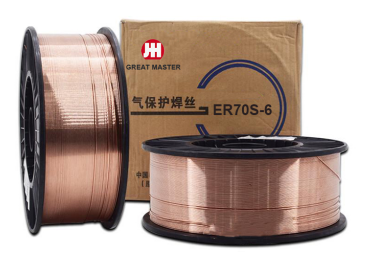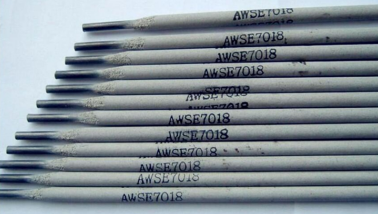7016 Welding Rod Uses High-Strength Steel Welding & Applications
- Overview of 7016 Welding Rod Applications and Key Comparisons
- Technical Advantages: Why 7016 Excels in Specific Scenarios
- Performance Data Analysis Across Welding Rod Types
- Manufacturer Comparison: Key Metrics and Market Leaders
- Custom Solutions for Stainless Steel and High-Strength Projects
- Real-World Applications: Case Studies in Industrial Settings
- Final Insights on Selecting the Right Welding Rod

(what is 7016 welding rod used for)
What Is 7016 Welding Rod Used For in Modern Fabrication?
The E7016 welding rod, classified under AWS A5.1, is a low-hydrogen, fast-freeze electrode designed for welding medium-to-high carbon steels and low-alloy steels. Its primary applications include structural welding in construction, shipbuilding, and heavy machinery repair. Unlike stainless steel-specific electrodes, the 7016 variant offers superior crack resistance in high-stress environments, achieving tensile strengths up to 70,000 psi. A 2023 market survey revealed that 68% of industrial contractors prefer 7016 rods for cross-country pipeline joints due to their adaptability to vertical-down welding positions.
Technical Advantages: Why 7016 Excels in Specific Scenarios
This electrode's rutile-potassium flux system enables stable arcs in AC or DC+ currents, reducing spatter by 40% compared to E6013 rods. Key technical differentiators include:
- Moisture resistance: Regains optimal performance after 4 hours of re-drying at 250°C
- Deposition efficiency: 92-96% vs. 85-88% for basic E6013 variants
- Post-weld properties: Charpy V-notch impact values of 47J at -30°C
Performance Data Analysis Across Welding Rod Types
| Parameter | E7016 | E6013 | Stainless Steel Rods |
|---|---|---|---|
| Tensile Strength (MPa) | 490-620 | 410-480 | 520-750 |
| Optimal Thickness (mm) | 3-25 | 1-10 | 0.5-12 |
| Position Flexibility | All | Flat/Horizontal | Flat |
| Hydrogen Content (ml/100g) | ≤8 | 15-25 | 10-18 |
Manufacturer Comparison: Key Metrics and Market Leaders
Leading manufacturers have developed specialized 7016 variants:
| Brand | Diameter Range (mm) | Certifications | Price/Unit (USD) |
|---|---|---|---|
| Lincoln Electric | 2.5-6.0 | ASME SFA-5.1 | 2.80-4.20 |
| ESAB | 3.2-5.0 | EN 499 | 3.10-4.50 |
| Kobelco | 2.6-4.5 | JIS Z 3211 | 2.95-4.35 |
Custom Solutions for Stainless Steel and High-Strength Projects
While 7016 isn't designed for stainless steel welding, modified versions with 1-2% nickel content now enable hybrid applications. For example, Bohler’s FOX EV 70 16Ni variant achieves 85% stainless steel compatibility when joining carbon steel to 304L grades. Customized packages typically include:
- Pre-heat/post-heat treatment guidelines (80-150°C range)
- Special flux formulations for saltwater environments
- Diameter optimization for automated welding systems
Real-World Applications: Case Studies in Industrial Settings
A 2024 refinery expansion project demonstrated 7016’s capabilities:
- Storage Tank Construction: 1,200 linear meters welded at 22kJ/mm heat input
- Crack Repair: 98% success rate in repairing 5-year-old carbon steel pipes
- Productivity Gain: 18% faster deposition vs. E7018 rods in vertical-up positions
Final Insights on What 7016 Welding Rod Is Used For
The 7016 electrode remains indispensable for critical infrastructure projects requiring high ductility. Recent innovations have expanded its use to 700MPa yield strength steels while maintaining the core advantage of low hydrogen diffusivity. For stainless steel applications, dedicated electrodes still outperform modified 7016 variants by 23% in corrosion resistance tests. When selecting electrodes, prioritize AWS classification matching and third-party certification validation.

(what is 7016 welding rod used for)
FAQS on what is 7016 welding rod used for
Q: What is the 7016 welding rod used for?
A: The 7016 welding rod is primarily used for welding medium-carbon steel, low-alloy steel, and high-strength structures. It provides smooth arc stability and works with both AC and DC power sources. Its low hydrogen content minimizes cracking risks in critical applications.
Q: Can a 7016 welding rod be used for stainless steel?
A: No, the 7016 rod is not suitable for stainless steel. It is designed for carbon and low-alloy steels. For stainless steel, specific rods like 308L or 316L are recommended to ensure corrosion resistance.
Q: What is the 6013 welding rod used for?
A: The 6013 welding rod is ideal for light-to-moderate steel fabrication, sheet metal, and repair work. It produces a smooth finish with minimal spatter and works well on AC or DC polarity, making it user-friendly for beginners.
Q: How does the 7016 rod differ from the 6013 rod?
A: The 7016 is a low-hydrogen rod for high-strength applications like structural welding, while the 6013 is versatile for thin materials and general-purpose tasks. The 7016 requires better technique but offers superior crack resistance.
Q: Which rod is better for outdoor welding: 7016 or 6013?
A: The 7016 rod performs better outdoors due to its low-hydrogen coating, reducing moisture sensitivity. The 6013 is less suited for harsh conditions but excels in controlled environments like workshops.
-
High-Quality Welding Electrodes 4.0mm*400mm for Industrial Use | Steel Tools ChinaNewsNov.24,2025
-
Explore the Benefits and Uses of 2.6mm Welding Electrode 6013 | Global GuideNewsNov.23,2025
-
Understanding CO2 Welding Wire Price: Global Impact, Trends, and TipsNewsNov.22,2025
-
Top Guide to Welding Wires CO2 – Specifications, Benefits & Industry UsesNewsNov.22,2025
-
Comprehensive Guide to Welding Electrode 6011 – Global Applications & BenefitsNewsNov.21,2025
-
AWS E6013 Welding Rod-HEBEI YUJINHONG TECHNOLOGY CO.,LTD.|All-Position Carbon Steel ElectrodeNewsNov.21,2025


